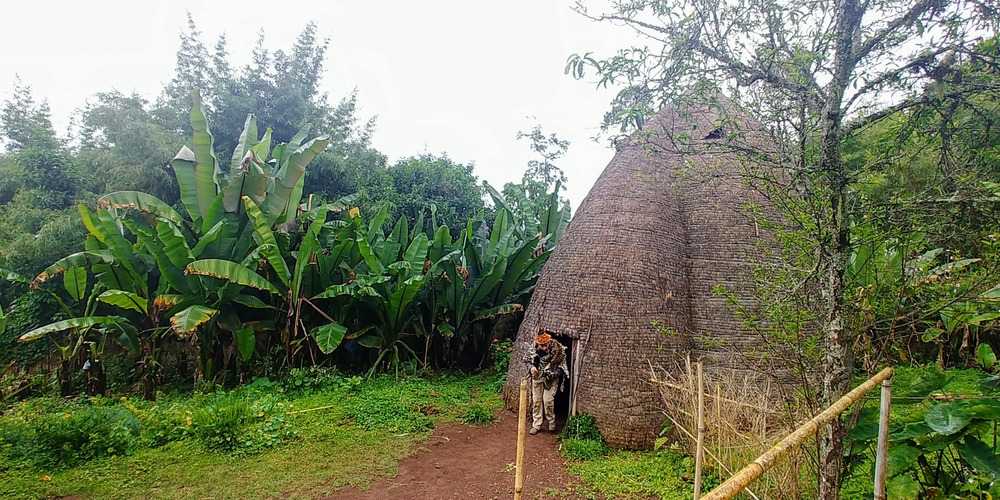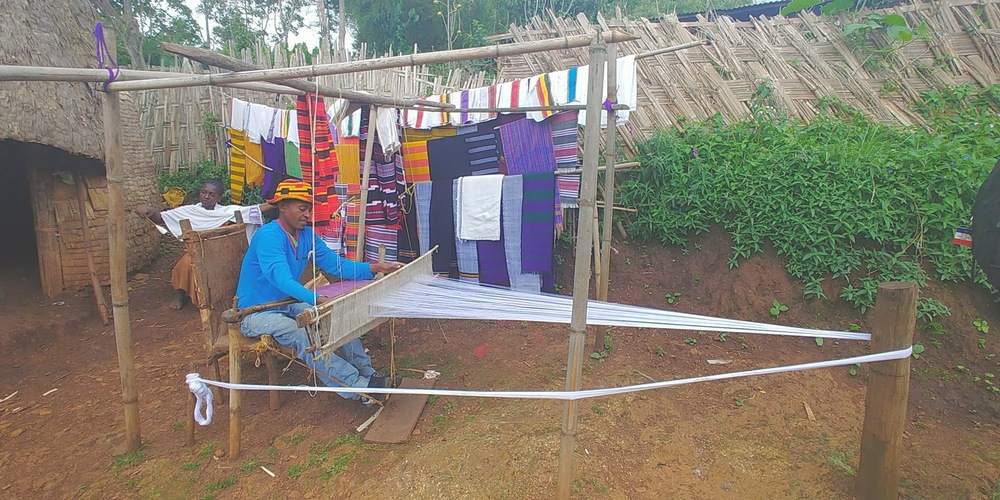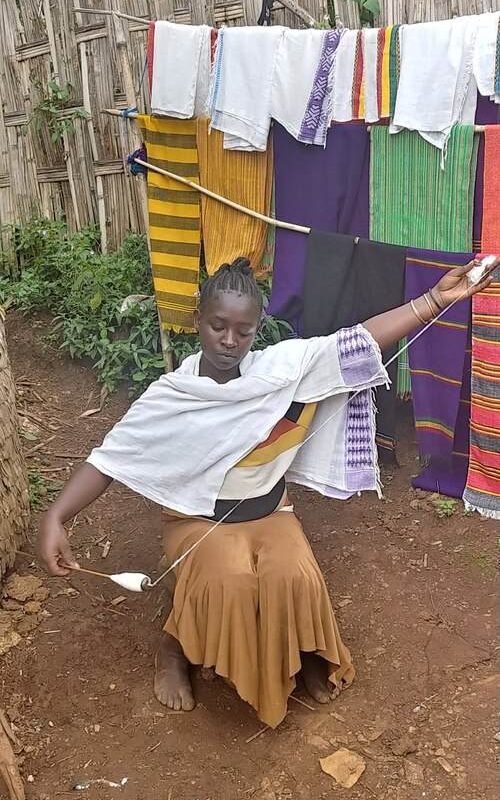The Dorze tribe is a small community primarily residing in a village located in close proximity to the city of Arbaminch, Ethiopia. Situated in a mountainous region, the Dorze Village can be reached within an hour’s drive from Arbaminch. It is believed that the Dorze originally originated from the Gamo highlands and are considered to be closely related to the Gamo tribe. The estimated population of the Dorze tribe is approximately 15,000 individuals. Many Dorze individuals engage in Waver as their primary occupation. The traditional textiles produced by the Dorze are renowned for their vibrant colors and are considered to be of the highest quality in Ethiopia. The Dorze people are well-known for their exceptional weaving skills and their unique huts, which is shaped like elephants and constructed using bamboo.

Industrious Skill of Dorze people
The Dorze people exhibit an industrious skill in their weaving techniques, which is prominently displayed in their unique beehive-shaped huts resembling the face of an elephant. These huts are constructed by interweaving bamboo and are supported by 11-12 meter vertical hardwood poles from the center. It is noteworthy that these huts have a lifespan of up to 80 years, and in the event of termite infestation, the local community is called upon to cut out the damaged part, lift it up, and relocate it to a safe location.

Traditionally, men are responsible for weaving, and Farming. They often traveled in search of work to Addis Ababa or other places. On the other hand, women are tasked with spinning cotton at home, which they then take to the market to sell or use at home if their husbands weave.
Smart Farming of Dorze
Dorze employs a highly intelligent approach to farming, utilizing mixed farming techniques. Despite the high population density, the region remains lush and verdant, surpassing even other areas in northern Ethiopia. The cultivation of various crops such as barley, wheat, cardamom, tobacco, corn, vegetables, and fruits is prevalent. However, it is crucial to highlight the significance of their staple crop, known as Enset or false banana (Ensete Edulis). This plant is indigenous to southern Ethiopia and boasts an impressive array of approximately 38 edible varieties.
While the root is commonly cooked and consumed as a vegetable, the preparation of adult plants requires extensive labor, mainly carried out by women. The process involves placing the leaf stems on an inclined board and scrape it with a Bamboo stick. Eventually separate the pulp and fibers. The root part is also crushed. Once crushed, the pulp and root are carefully placed into a hole measuring around 1.5 meters deep and 1 meter wide. The hole is lined with Enset leaves and covered with leaves and stones to seal it. It will be left to ferment for three months to three years.
After fermentation, the pulp is extracted and used to make a type of pancake. Typically enjoyed as bread with hot spiced chili, honey, cabbage, meat and stew. Furthermore, the Dorze community utilizes the fibrous by-product to create ropes and Basket.

